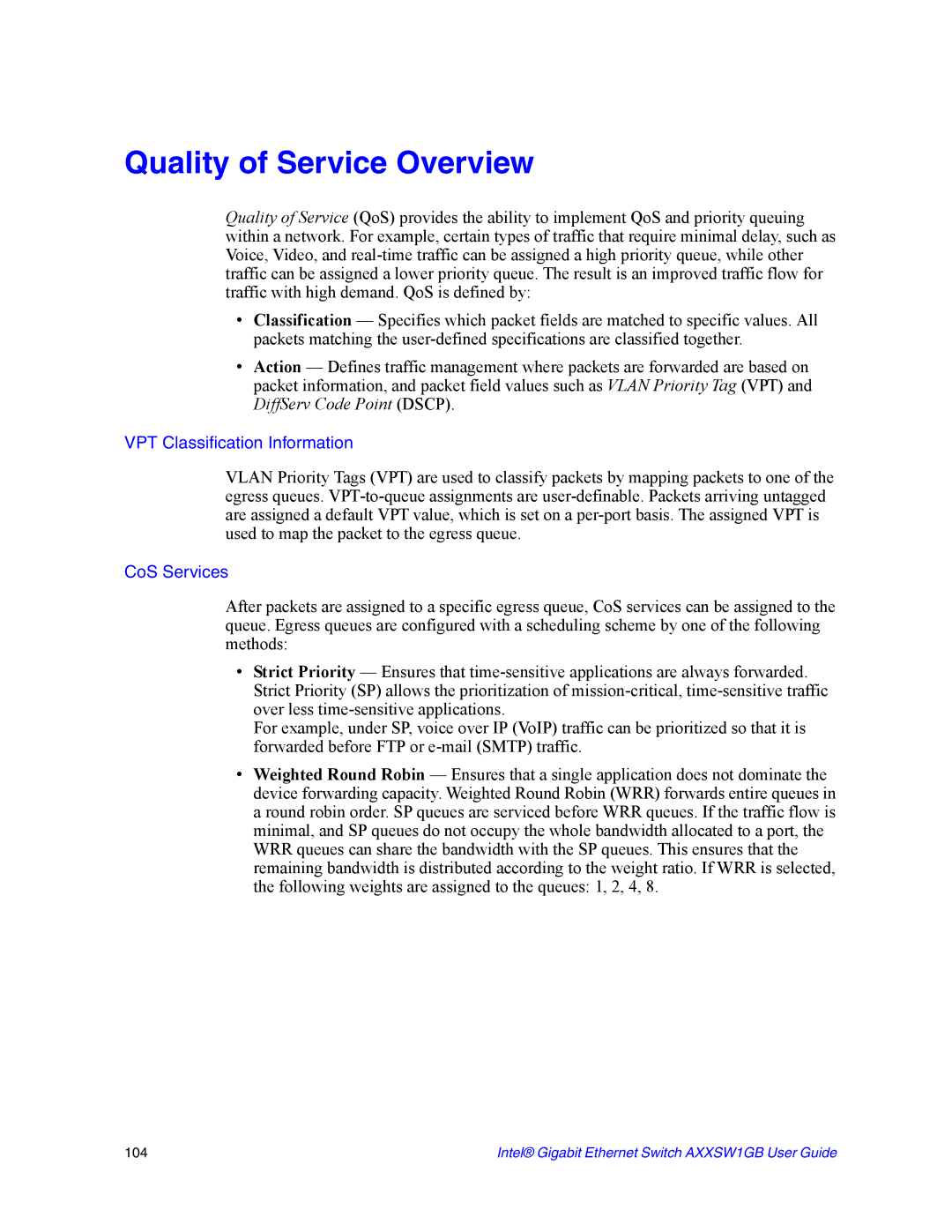Quality of Service Overview
Quality of Service (QoS) provides the ability to implement QoS and priority queuing within a network. For example, certain types of traffic that require minimal delay, such as Voice, Video, and
•Classification — Specifies which packet fields are matched to specific values. All packets matching the
•Action — Defines traffic management where packets are forwarded are based on packet information, and packet field values such as VLAN Priority Tag (VPT) and DiffServ Code Point (DSCP).
VPT Classification Information
VLAN Priority Tags (VPT) are used to classify packets by mapping packets to one of the egress queues.
CoS Services
After packets are assigned to a specific egress queue, CoS services can be assigned to the queue. Egress queues are configured with a scheduling scheme by one of the following methods:
•Strict Priority — Ensures that
For example, under SP, voice over IP (VoIP) traffic can be prioritized so that it is forwarded before FTP or
•Weighted Round Robin — Ensures that a single application does not dominate the device forwarding capacity. Weighted Round Robin (WRR) forwards entire queues in a round robin order. SP queues are serviced before WRR queues. If the traffic flow is minimal, and SP queues do not occupy the whole bandwidth allocated to a port, the WRR queues can share the bandwidth with the SP queues. This ensures that the remaining bandwidth is distributed according to the weight ratio. If WRR is selected, the following weights are assigned to the queues: 1, 2, 4, 8.
104 | Intel® Gigabit Ethernet Switch AXXSW1GB User Guide |
